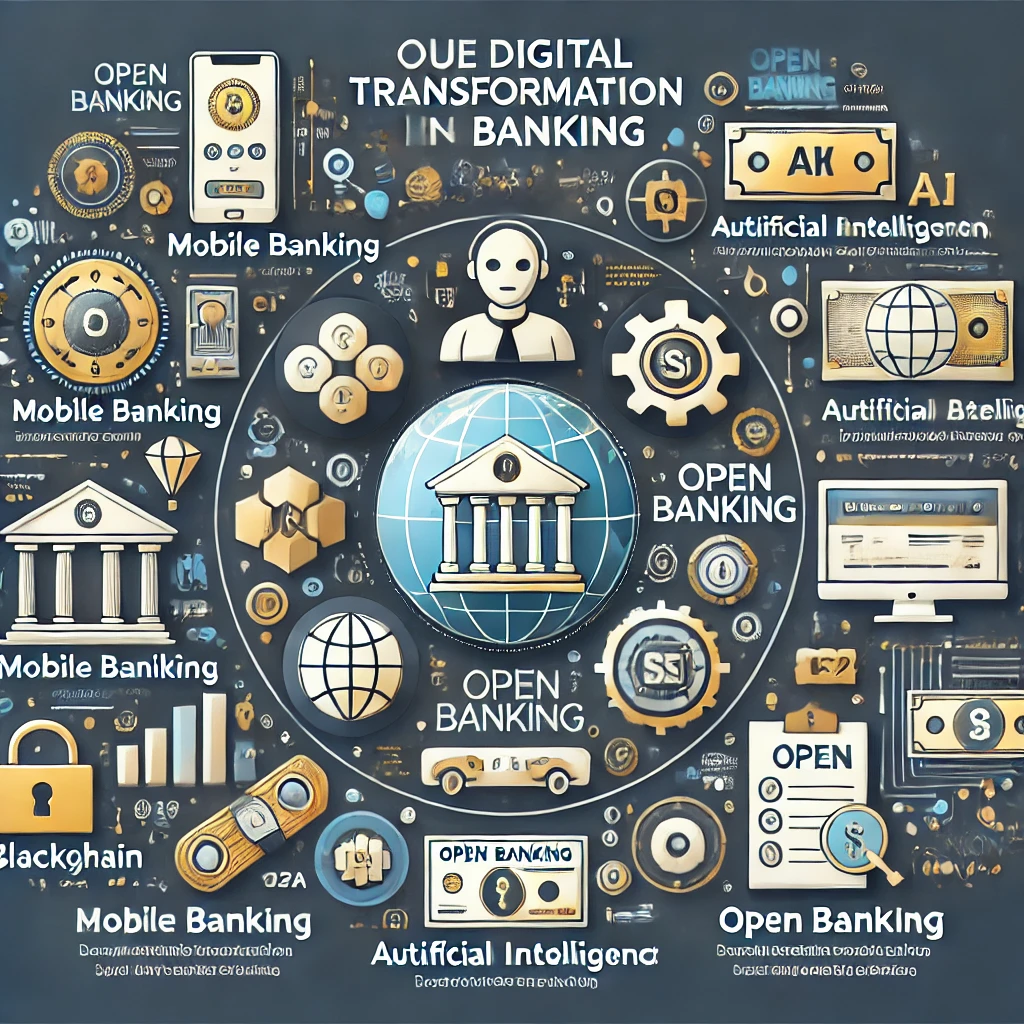Banking Digitalization in 2024: Key Trends Shaping the Future
Discover how banking digitalization is reshaping financial services in 2024, with key trends like AI, blockchain, and neobanks driving innovation and improving customer experience.

Introduction
Banking digitalization is transforming how financial institutions operate and interact with customers. From AI-driven services to blockchain solutions, 2024 is set to be a landmark year for digital banking. In this article, we’ll explore the top trends in banking digitalization and what they mean for the future of financial services.
1. AI and Machine Learning in Banking
Artificial Intelligence (AI) is enhancing customer service, fraud detection, and financial decision-making. AI-powered chatbots are handling routine tasks, while machine learning algorithms help banks predict trends and personalize services.
2. The Rise of Open Banking
Open banking allows third-party financial services to access customer banking data (with consent), driving innovation and improving customer experience. Through APIs, banks can offer new financial products and services faster and more securely.
3. Blockchain for Secure Transactions
Blockchain technology is being increasingly adopted to streamline cross-border payments and improve transaction transparency. It reduces costs and ensures secure, decentralized records of financial transactions.
4. Digital-Only Banks (Neobanks)
Neobanks operate entirely online, offering customers streamlined services at lower costs. In 2024, we can expect to see the continued growth of these digital-only banks, driven by younger, tech-savvy customers looking for convenient financial solutions.
5. Cybersecurity and Regulatory Challenges
As banks go digital, the risks of cyberattacks grow. Ensuring strong cybersecurity and compliance with regulations such as GDPR and AML laws is critical to keeping customer data safe.
Conclusion
Digital transformation in banking is here to stay. With advancements in AI, blockchain, and open banking, financial institutions must embrace these technologies to remain competitive and meet the growing expectations of customers.
